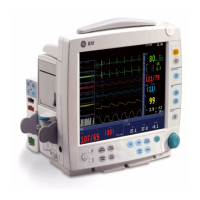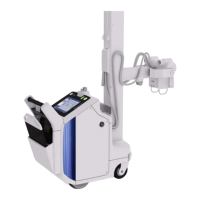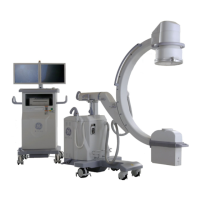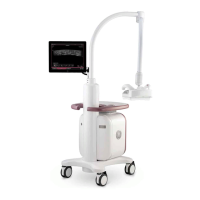GE HEALTHCARE
DIRECTION 5461425-8EN, REVISION 6 BRIVO XR118 SERVICE MANUAL
Page 158 Section 10.0 - PACS / Image Display Test Image
a.) Open the PACS Test Image 6.
b.) Change the Window-Level on PACS trying to see the 5 squares in all 12 bands: A
suggested value is WC/WW=0/500 (Note: this may vary between different PACS
workstations)
c.) The loss of dynamic range is most common in the top dark band. The 5 squares will not
be visible in the top dark band 1: Record results in Table 6-2, line number 10
6.) Interactive Windowing
PACS can apply the VOI-LUT to the image data “interactively” or non-interactively “fixed”. In
an interactive PACS, the VOI-LUT is recalculated as the user changes the WC or WW.
In a non-interactive PACS, the VOI-LUT is applied upon initial display of the image, and the
VOI-LUT is not updated as the user changes WC or WW. Images displayed on non-interactive
PACS are displayed and behave identically as images sent as Burn-on-Send. Non-interactive
PACS can be considered as “Burn-on-Receive.” The five squares will not be visible in all 12
bands (especially the top band) when the image is window-leveled.
The preferred method is an interactive VOI-LUT, (e.g., Centricity). Several PACS are known
to apply the VOI-LUT as fixed, e.g., McKesson and Fuji.
a.) Open the PACS Test Image 1.
b.) Change the Window-Level on PACS trying to see the five squares in all 12 bands,
especially the top band.
A suggested value is WC/WW=2000/500 “You may note that this may vary between
different PACS workstations.”
c.) Record whether the five squares are visible in Table 6-2, line number 11
Different PACS image display scenarios.
7.) Annotations
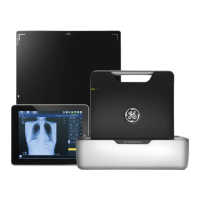
